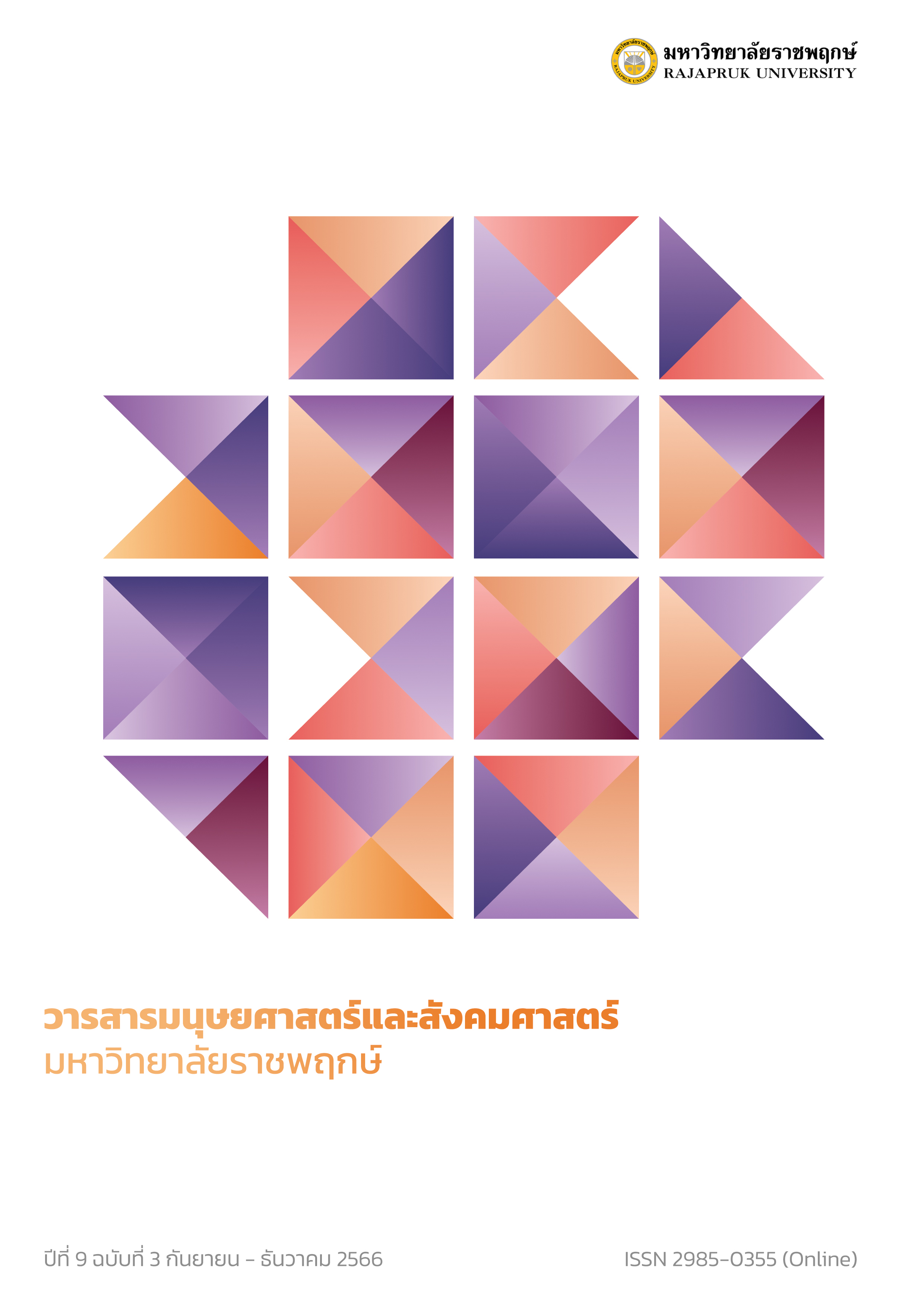The Sustainable Consumption Beheviors of Generation X and Generation Y Groups in Nonthaburi Province
Main Article Content
Abstract
The purposes of this study were to 1) study the level of sustainable consumption behavior of generation X and generation Y in Nonthaburi province, and 2) to compare the sustainable consumption behavior of generation X and generation Y in Nonthaburi province. A questionnaire was used as a tool for collecting data from 400 samples. Statistics used in data analysis were frequency, percentage, mean, standard deviation, and t-test.
The research results found that: 1) the level of sustainable consumption behavior; the economic dimension, in general, was at the level of accomplishment every time. Social dimension, in general, was at the level of accomplishment often. The environmental dimension, in general, was at the level of frequent use. 2) Generation X and generation Y had different sustainable consumption behavior in the economic dimension, social dimension, and environmental dimensions statistically significant at the .05 level.
Article Details
References
กุณฑลี รื่นรมย์. (2553). การวิจัยการตลาด. พิมพ์ครั้งที่ 7. กรุงเทพฯ: โรงพิมพ์แห่งจุฬาลงกรณ์มหาวิทยาลัย.
ธนกฤต วันต๊ะเมล์. (2561). การตลาดเพื่อความยั่งยืน. กรุงเทพฯ: โรงพิมพ์แห่งจุฬาลงกรณ์มหาวิทยาลัย.
นภัสวรรณ วงกตวรินทร์. (2564). ปัจจัยที่ส่งผลต่อการซื้อผลิตภัณฑ์อาหารที่ใช้บรรจุภัณฑ์สีเขียว. สารนิพนธ์ การจัดการมหาบัณฑิต มหาวิทยาลัยมหิดล.
พฤกษา ลิ้มสวรรค์. (2563). ปัจจัยที่มีอิทธิพลต่อพฤติกรรมการอนุรักษ์สิ่งแวดล้อมโดยใช้ผลิตภัณฑ์ที่เป็นมิตรต่อสิ่งแวดล้อมของนักศึกษามหาวิทยาลัยสีเขียวจังหวัดนครปฐม. วิทยานิพนธ์ บริหารธุรกิจมหาบัณฑิต มหาวิทยาลัยศิลปากร.
สถาบันสิ่งแวดล้อมไทย. (2560). โครงการจัดทำยุทธศาสตร์การบริโภคที่ยั่งยืน: บทสรุปสำหรับผู้บริหาร. ค้นเมื่อวันที่ 10 ตุลาคม 2560, จาก http://www.tei.or.th/scs/pdf/scs-success-executive-sum-t.pdf.
สำนักงานพัฒนาธุรกรรมอิเล็กทรอนิกส์. (2565). รายงานผลการสำรวจพฤติกรรมผู้ใช้อินเทอร์เน็ตในประเทศไทย. ค้นเมื่อ 10 มิถุนายน 2565, จาก https://www. etda.or.th/publishing-detail/thailand-internet-user-profile-2018.html.
สำนักงานสถิติจังหวัดนนทบุรี. (2565). ปิรามิดประชากรในจังหวัดนนทบุรี พ.ศ. 2565. ค้นเมื่อวันที่ 5 สิงหาคม 2565, จาก http://www.Region4.hpc.go.th./hdc/dashboard/population
pyramid.
สุนีรัตน์ ปิ่นตุรงค์. (2563). ทัศนคติและพฤติกรรมต่อการตลาดเพื่อสิ่งแวดล้อมของผู้บริโภคในประเทศไทย. สารนิพนธ์ การจัดการมหาบัณฑิต มหาวิทยาลัยมหิดล.
อนุวัต สงสม. (2555). การตลาดสีเขียว: มโนทัศน์และพฤติกรรมผู้บริโภค. วารสารวิชาการคณะมนุษย์ศาสตร์และสังคมศาสตร์, 8(1): 65-84.
Cochran, W.G. (1993). Sampling Techniques. 2th ed. New York: wiley & Sons, Inc. Doyle.
Emery, B. (2012). Sustainable Markrting. Harlow, England: Pearson Education.
Evans. J.D. (1996). Straightforward Statistics for the Behavioral Sciences. Broos/Cole Publishing; Pacific Grove, Calif.
Him. (2008). Babyboomer, GenX, GenY. Retrieved on December, 12th, 2022, from http://www. oknation.net/blog/print.php?id=323187.
Likert Rensis. (1967). The Method of Constructing and Attitude Scale. In Reading in Fishbeic. M(Ed.), Attitude Theory and Measurement (pp.90-95). New York: Wiley & Sons.
Yamane, Taro. (1976). Statistics: An introductory analysis. 2nd ed. New York: Harper and Row.


